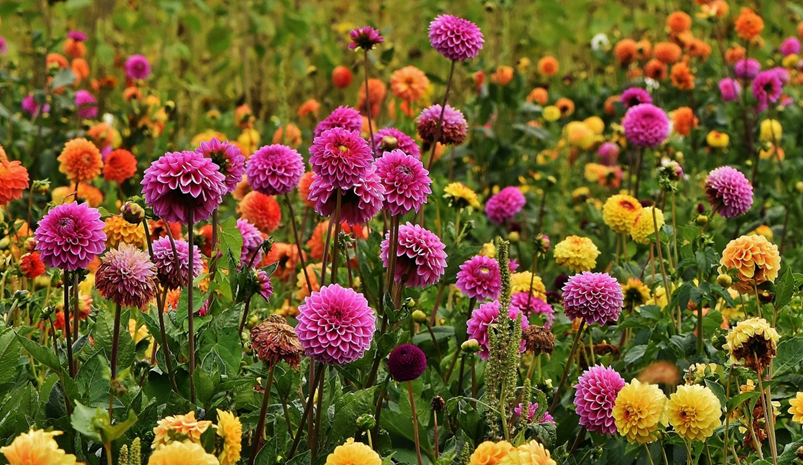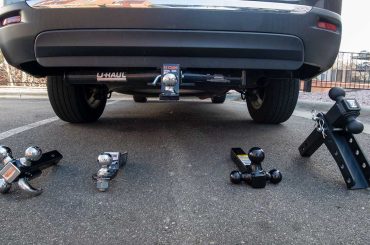Table of Contents
Just picture a garden full of dahlias that never stop blooming from summer to fall. Imagine being able to enjoy beautiful, vibrant flowers every day. Consider a garden full of robust, disease- and pest-resistant plants. It seems too good to be true, isn’t it? Okay, so it’s not. By learning how to deadhead dahlias, you can accomplish all of this and more by figuring out how to deadhead dahlias.
In this article, we’ll outline three simple steps for deadheading dahlias. Basic tools like pruners, scissors, or snips are required, as well as an empty bucket or pouch to collect the cut flowers. You will also discover some methods and techniques to make deadheading simpler and more efficient. The outcomes will astound you, and you’ll cherish your elegant dahlias like never before.
Step 1: Pick out The Dahlias that Require Deadheading
The appropriate period for deadheading is when the first flowers have started showing signs of ageing; it may be early July and continue through the end of their flowering season at the onset of winter.
The initial phase in deadheading dahlias is to find the flowers that need to be cut. If you know some tricks, you won’t have to waste time and effort cutting off new blooms. Below are some pointers to help you identify dahlias that require deadheading.
1. Shrivelled and Faded Dahlias
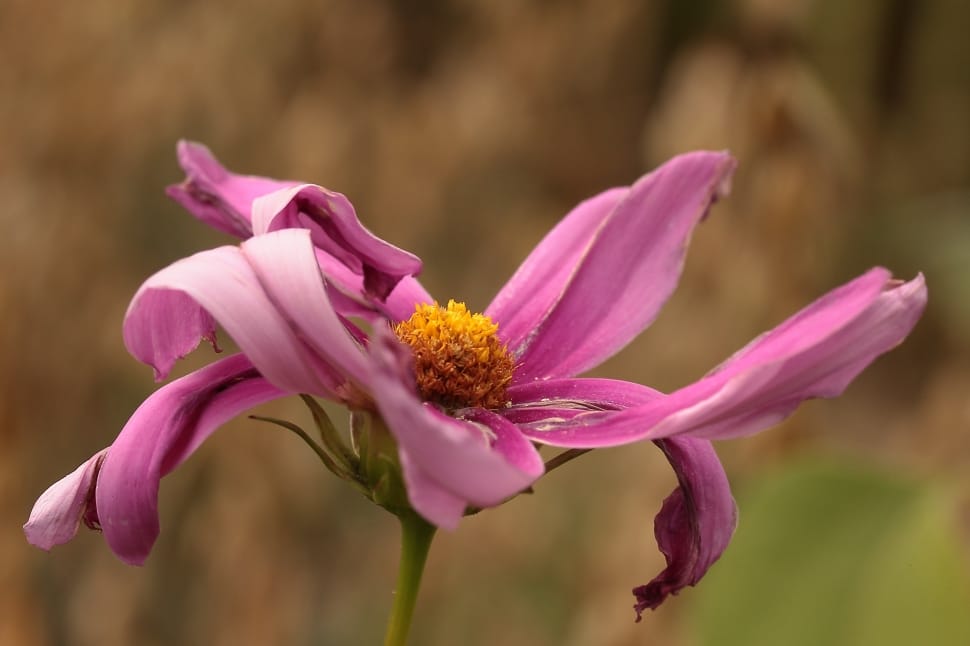
Watch out for dahlias that are shrivelled, faded, or brown. These plants need to be cut off because they are no longer blooming. They typically look dried or shrivelled, and the bottom may develop a couple of seeds.
2. Charmless Dahlias
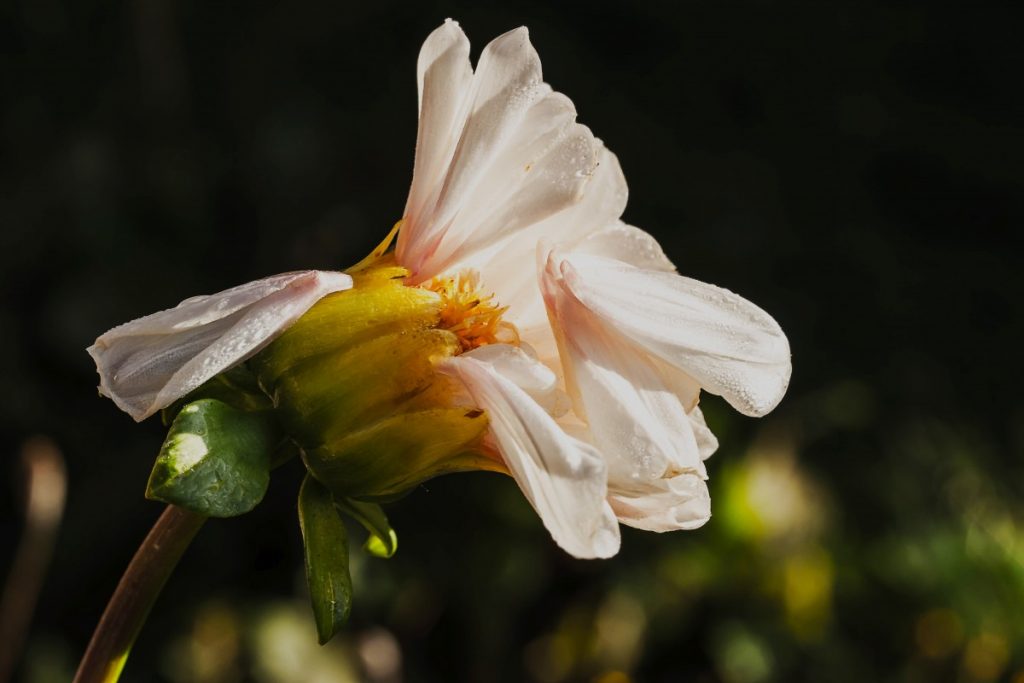
Seek out blooms that are beyond their peak of charm. They are the ones that have started to deteriorate and have lost their appearance, structure, or fragrance.
Even though some petals are still affixed to them, they don’t look as lovely or vibrant as they once did.
3. Infected and Damaged Dahlias
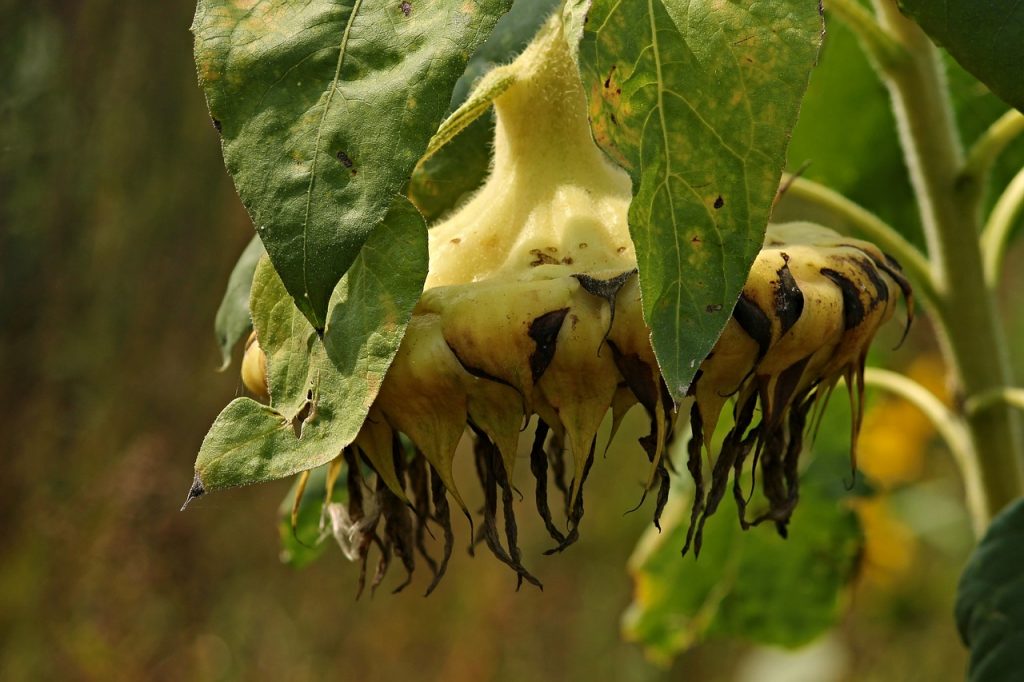
Check for infected or damaged dahlia petals. They are undesirable or unsightly because of pests, illnesses, the environment, or other factors. They might have rips, stains, mould, or other damage or infection signs.
4. Difference Between Dead Heads and Dahlia Buds
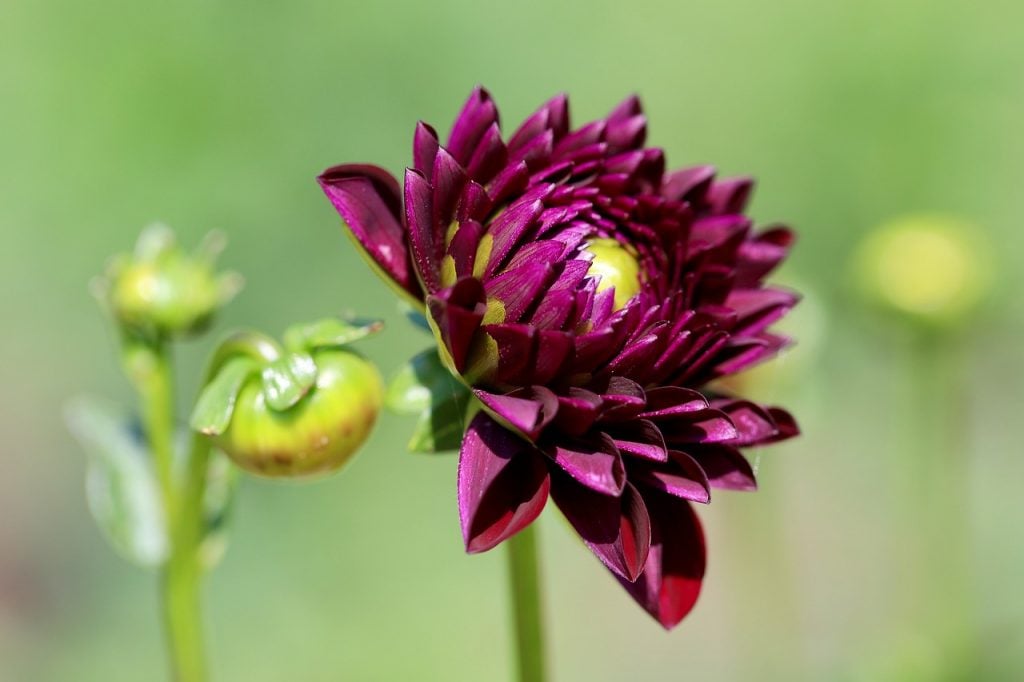
- Regardless of whether it is a single, dual, cactus, ball pompom, dinnerplate, or other kinds of dahlia, you may utilize these guidelines to determine which flowers need to be deadheaded.
- You need to keep an eye out for the distinction between bud and flower heads on your dahlia plants. It’s pretty simple to understand. While the dead-head dahlias have a cone-like shape and fade, their buds are oval-shaped.
- Be careful not to cut off the buds because they will soon bloom into new flowers. You can easily distinguish between flower heads and buds by comparing the two’s size and hue.
- Flowering Time : Summer
- Colour: Orange
- Flowering Height: 120-150cm
Step 2: How to Deadhead Dahlias
Using the simple but powerful technique of deadheading, you can completely transform the appearance of your dahlia garden. A pair of neat, razor-sharp pruning shears or scissors is necessary.
1. Cut the Flower Heads at The Right Spot
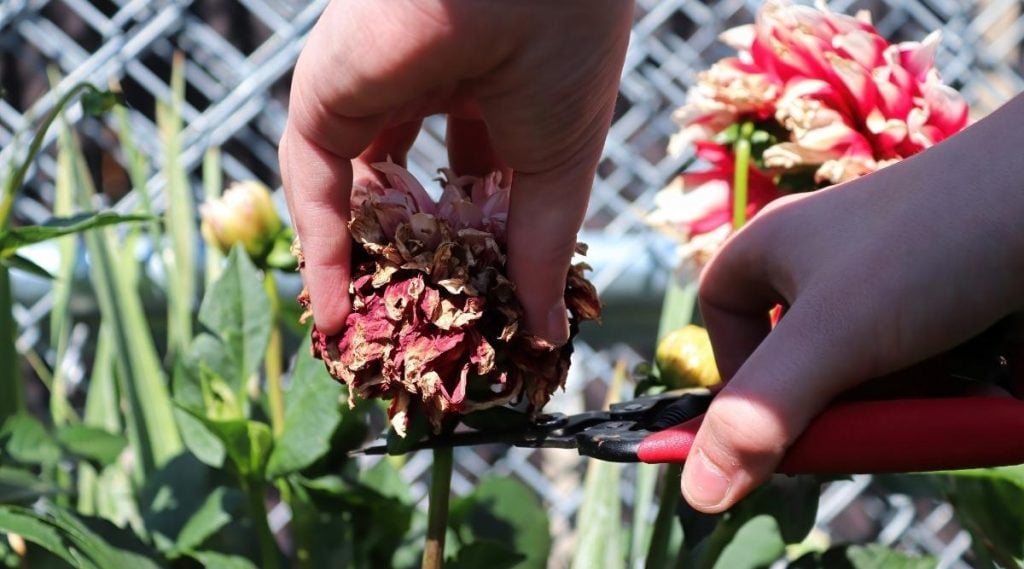
The trimming-off process starts once you identify all discoloured, wilted, or brownish Dahlia flower heads. Following your selection of the appropriate flower heads for snipping off, be certain to locate the spent bloom’s stem. Now fix the spot where the stem meets a leaf. Do remember that if you prune it off just below the spent flower head, it may create an unappealing look on the flowerless stem.
Out of ignorance, if you do this to other stems also, the overall look of the plant would change into something pretty hideous. Maintaining proper trimming will result in a tidy, thick plant.
2. Deadhead the Flower with An Angled Cut
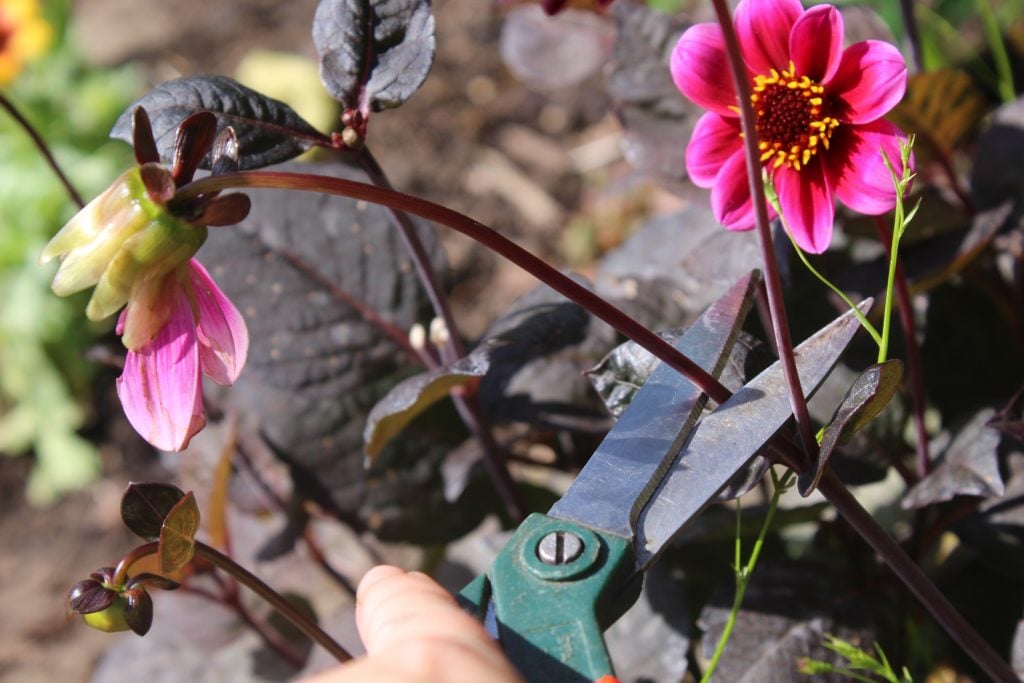
Although you can use your fingers to pull off the old flowers, you should apply scissors for better cuts and to avoid the danger of infection with this beautiful herb. You must have a set of clean, well-kept scissors, pruners, or snips to remove the flower head. Sterilize your equipment both before and after use to prevent the spread of disease or pests.
With one hand holding the flower head, use the other to separate the stem at a 45-degree angle, approximately one-quarter inch over the following row of leaves or buds. Without damaging or tearing the stem, attempt to cut the stem with a clean, angled, and seamless cut. Don’t overlook damaged leaves and cut them, too.
- Gorgeous gift for a gardening loved one
- Endorsed by the Royal Horticultural Society
- Specially-coloured comfort-grip handles
3. Dispose of The Cut Flower Heads
Use a trash bag or a composting container to dispose of the cut flower heads. In order to prevent insects or fungi from harming your dahlias, refrain from placing them on the ground or close to the plants. If the cut blooms are still vibrant and fresh, you may utilise them to make crafts or indoor decorations.
Step 3: How To Proceed During the Blooming Season
The process of deadheading never stops. In this section, we will show you how to maintain the health and beauty of dahlia flowers while they’re in bloom.
1. Repeating the Deadheading Process
Dahlia’s deadheading is not a one-time task. It is an ongoing process that you must maintain throughout the entire flowering season.
Dahlias may blossom from the middle of the summer season to the end of the season, depending on the variety and the environment.
Every bloom may continue to blossom for a few days or sometimes for a few weeks. Deadheading your dahlias frequently and consistently is necessary to maintain their best appearance.
2. Criteria for Deadheading the Dahlias
Both the timetable and frequency of deadheading dahlias will differ concerning the kind and shape of the blooms and the temperature. Your gardening style also influences the deadheading schedule.
In general terms, you need to deadhead your dahlias once a week or a few times a week, especially when it’s the peak blooming season. After a storm or strong wind, you must also deadhead your dahlias because these situations can harm or uproot the flowers.
3. Supporting and Placing Dahlias
The plants should be supported by metal holders or wooden stakes if they are taller types of dahlias. Secure the stems to their position using smooth cord or plant ties. Keep weeds out of the dahlias. Keep an eye out for pests like earwigs, spider mites, and aphids.
The Advantages of Regular Deadheading
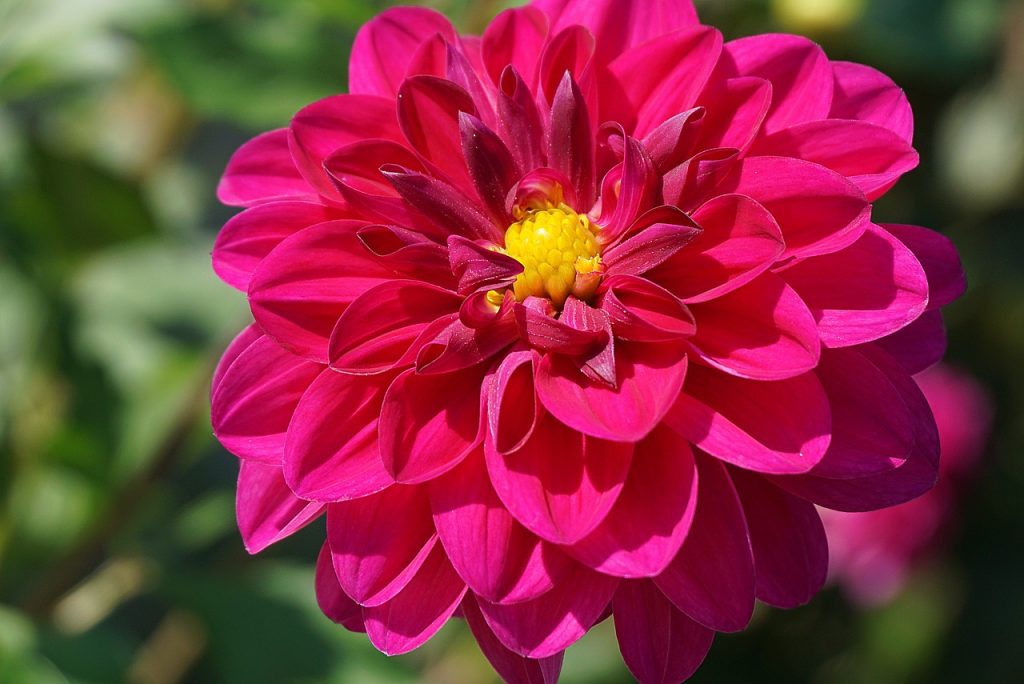
- When you start deadheading the dahlias at regular intervals, you’ll be delighted to witness the metamorphic transformation of your dahlia garden.
- If you remove the old or fading flowers, the plant won’t expend its vital resources on producing seeds. This encourages the plant to grow more blossoms on the side limbs, extending the flowering time.
- Your dahlias will look better and be healthier as a result of deadheading because it keeps insects and diseases from invading the plant. Deadheading keeps your dahlias from growing leggy or top-heavy, which helps retain both their form and size.
You should also be aware of the biggest drawback of deadheading dahlias. The plant may produce fewer seeds as a result.
Post-Blooming Season Hacks
In the UK, dahlias can bloom well if you deadhead them regularly from the middle of the summer until the weather becomes frosty.
- The stems and leaves of the dahlia plant will perish if they receive frost at the end of autumn or in the colder months.
- You can take one of the following steps once they have frozen:
- Let the dahlia plants stay in their place, or
- take their tubers out and keep them in an area free from frost during the winter.
Uses of Dahlia
- There’s no need to throw away the trimmed flowers you cut off from your Dahlia plants. They can be used in various ways, including making compost, in dried arrangements, vases, and bouquets.
- If you plan to use them in interior design, remember to cut them while they have not wilted or faded and are entirely opened. Then, put the flowers into a vase with some water and floral preservatives.
- Otherwise, turn dahlias upside-down in a dry, dark area for longer-lasting setups until they are entirely dry.
- Cut them up into tiny bits and add them to the composting container, or gather them whenever you would like to compost them.
Life Hacks for Your Dahlia
You can follow these hacks for the best outcomes:
- Dahlias plants are soft herbs. Excessive stem growth can cause problems. If you want to boost the show of your Dahlia garden in totality, start slimming them in June or July.
- Each plant should have seven to ten strong stems.
- Give them a sharp tug if you want to remove overgrown or stiff shoots neatly.
- While growing large varieties, such as Dinnerplate Dahlias, reduce the dahlia stems of every plant to three or five in number to get fewer but larger flowers.
- If your dahlia blossoms sometimes grow deformed or their petals fail to open correctly, this could be an indication of plant bug destruction.
- Your dahlias need fertiliser after the deadheading procedure. The plants will receive the nourishment necessary to grow new flowers.
- We recommend that you apply a slow-release fertiliser designed especially for dahlias.
- Slow-release fertilisers deliver a tiny but consistent amount of nutrients gradually, thus helpful to plant growth.
- While fertilising, adhere to the directions to yield the best flowers.
- Form: solid (dry)
- Target plants: Dahlia
Conclusion
The blog covered the various facts of how to deadhead dahlias. This is crucial to extend flowering and promote the growth of new buds on the plant.
You must follow the deadheading process at least once a week. Using clean shears to cut is the correct way to perform the task. Use the shears to remove any damaged leaves you come across when deadheading. The flower head should be removed just above the stem’s following row of leaves or buds. This will help the plant maintain a tidy appearance and encourage the side branches to yield more blossoms. Avoid putting discarded blossoms on the soil or nearby plants to protect your lively dahlias from bugs or moulds. You can use the cut flowers to decorate your home.
Deadhead your dahlias frequently to enjoy their beauty and prolong their blooming period. Do share your experience and suggestion with us in the comment box.

